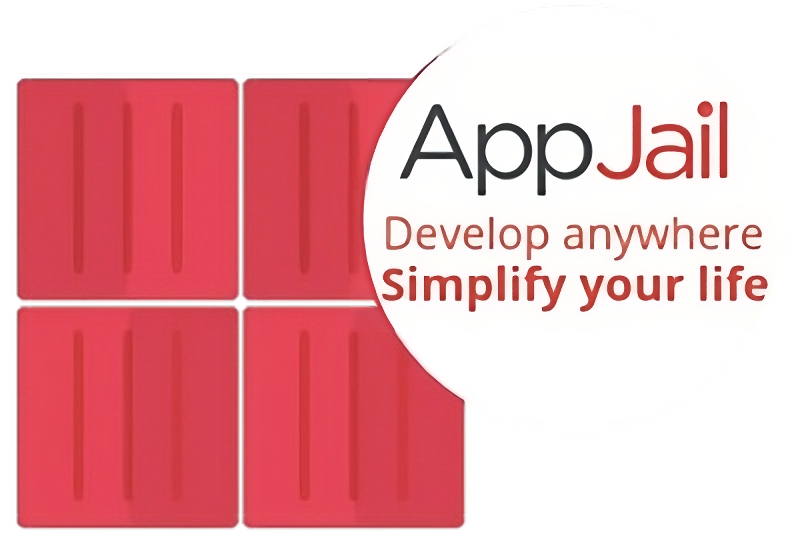AppJail is an open-source BSD-3 licensed framework entirely written in sh(1) and C to create isolated, portable and easy to deploy environments using FreeBSD jails that behaves like an application.
Its goals are to simplify life for sysadmins and developers by providing a unified interface that automates the jail workflow by combining the base FreeBSD tools.
AppJail offers simple ways to do complex things.
- Easy to use.
- Parallel startup (Healthcheckers, Jails & NAT).
- UFS and ZFS support.
- RACCT/RCTL support.
- NAT support.
- Port expose - network port forwarding into jail.
- IPv4 and IPv6 support.
- DHCP and SLAAC support.
- Virtual networks - A jail can be on several virtual networks at the same time.
- Bridge support.
- VNET support.
- Deploy your applications much easier using Makejail!
- Netgraph support.
- LinuxJails support.
- Supports thin and thick jails.
- TinyJails - Experimental feature to create a very stripped down jail that is very useful to distribute.
- Startup order control - Using priorities and the boot flag makes management much easier.
- Jail dependency support.
- Initscripts - Make your jails interactive!
- Backup your jails using tarballs or raw images (ZFS only) with a single command.
- Modular structure - each command is a unique file that has its own responsibility in AppJail. This makes AppJail maintenance much easier.
- Table interface - many commands have a table-like interface, which is very familiar to many sysadmin tools.
- No databases - each configuration is separated in each entity (networks, jails, etc.) which makes maintenance much easier.
- Healthcheckers - Monitor your jails and make sure they are healthy!
- Images - Your jail in a single file!
- DEVFS support - Dynamic device management!
- OCI support - Containers everywhere!
- ...
How does AppJail compare to other FreeBSD jail frameworks?
Characters Allowed:
- Jail Name, Network Name, Custom Stage and Volume Name: Although jail names can use any character (except
.), AppJail does not use any possible character. Valid regex is^[a-zA-Z0-9_][a-zA-Z0-9_-]*$. - Interface Name: For interface names, the regex is
^[a-zA-Z0-9_][a-zA-Z0-9_.]*$. - JNG: For
jng, the regex is^[a-zA-Z_]+[a-zA-Z0-9_]*$and for its links the regex is^[0-9a-zA-Z_]+$.
AppJail tries to not modify the host:
Such as making changes to rc.conf(5), sysctl.conf(5), the firewall configuration file, etc. It is preferable that the user is aware of such changes, this simplifies a lot.
AppJail tries not to be interactive
AppJail tries not to play with jails created not by itself
AppJail tries not to automate everything:
Instead of using one command to do a lot of work, it is preferable to combine small commands. A perfect example is appjail makejail which leaves the responsibility to the main commands.
AppJail is not focused on building software:
There are very interesting projects like poudriere or synth that can also create a custom repository. Use that custom repository in a jail created by AppJail to install your ports.
- Add support for
ipfwandipfilter. - Although Makejails can be retrieved anywhere by the methods described in
INCLUDE, a centralized repository to easily retrieve generic Makejails is useful. This can be done on Github or Gitlab. (See https://github.com/AppJail-makejails). - Create Makejails for applications. It is a difficult job to do alone, but with many people it is feasible. (Done using the centralized repository, of course this is in progress anyway).
- rc scripts to start resource limitation rules, nat for jails and to expose ports.
appjail quickandappjail-configdo this job, but it can be useful to spend less time starting/stopping jails. - Implement a supervisor. (Done using a similar way to supervise jails and their services named
Healthcheckers). - Add option to
appjail configto check if the parameters of a template are valid forjail(8). (Done with the new tool,appjail-config) - Implement all
jail(8)parameters inappjail quick. - The
jngscript is useful, but AppJail must create the Netgraph nodes in the same way as bridges and epairs. - Man pages.
If you have found a bug, have an idea or need help, use the issue tracker. Of course, PRs are welcome.
